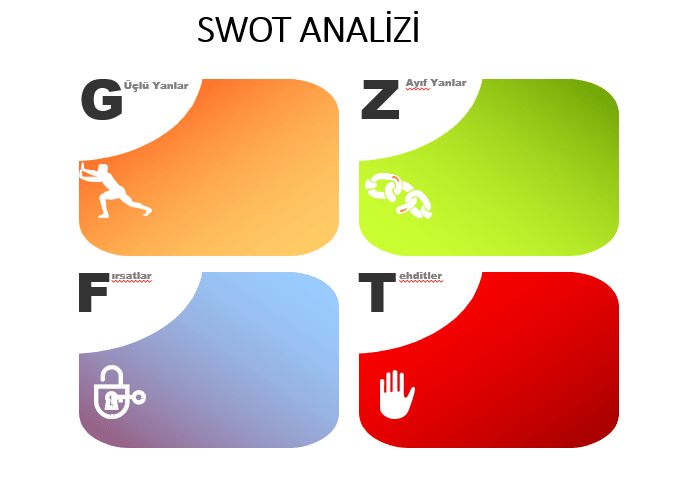Step-by-Step Campaign Preparation
A campaign, in terms of the advertising industry, refers to a period of intense and widespread activity with a specific start and end time about a product, service, or image.
One of the crucial things that newcomers to the marketing world should know is how to plan and execute a campaign. We can examine the steps to prepare and execute a campaign in 9 points:
-
Depicting the Current Situation
- Preparing the Campaign Profile/Launch Document
- Conducting Competitor Analysis and Identifying the Target Audience
- Determining the Campaign Concept, Communication Strategy, and Suitable Marketing Channels
- Identifying Risks and Working on Risk Scenarios
- Allocating Budget and Making Purchases
-
Implementing and Monitoring the Communication Plan
- Conducting Interim Assessments
-
Reporting and Archiving
1. Depicting the Current Situation
For a campaign to be successful, it is essential to depict the current situation accurately. This can be related to a product, service, or image. For instance, let’s assume that we want to enhance our brand image/value. In this case, we want to organize an image campaign. First, we need to see and evaluate our current situation. To do this, we should review the survey we conducted for our organization if available (larger companies usually have one). Otherwise, we need to rely on individual opinions. While various techniques exist, a SWOT analysis is generally sufficient for evaluating the situation, identifying strengths and weaknesses, and discovering opportunities and threats.
 2. Preparing the Campaign Profile/Launch Document
2. Preparing the Campaign Profile/Launch Document
The campaign launch document is, in fact, an approval document concerning the fundamental components and activities of the project (it may not be necessary for small companies). This document should include the following headings, provided here as an example:
Campaign Subject: Increasing Brand Image and Awareness Justification for the Campaign: According to the survey results, the perception of the brand’s quality is 65%, and brand awareness is 35%. Therefore, it is believed that elevating the perception of quality and brand awareness among our customers and the public will increase sales and regular orders. In this regard, the brand’s strengths and weaknesses have been identified, and threats and opportunities have been determined (the report of the study conducted in item 1 can be presented in the annex). Campaign Goal: Increase brand perception of quality to 80% and brand awareness to 50%. Campaign Budget: 550,000 TL Campaign Period: 01.01.2018 – 15.02.2018
Once this document is completed, it is submitted to the approving authority (as mentioned earlier, it may not be necessary for small companies). After receiving approval, we can start working on the details. Obtaining such a document, regardless of the source (management recommendation or proposal from relevant units), is crucial for campaign execution (it will save you from headaches in the future).
3. Conducting Competitor Analysis and Identifying the Target Audience
After performing the current situation analysis and necessary assessments, we move on to identifying the target audience. This step is also extremely important. Trying to reach and convert everyone into customers is utopian and very costly. Therefore, it is essential to select a target audience based on factors such as location, age range, gender, education, interests, and other characteristics. This will not only help determine the channels through which the campaign will be executed but also influence the communication language to be used. Additionally, it is essential to provide a specific answer to the question of who the competitors’ target audience is.
 4. Determining the Campaign Concept, Communication Strategy, and Suitable Marketing Channels
4. Determining the Campaign Concept, Communication Strategy, and Suitable Marketing Channels
At this stage, considering the initial situation assessment, SWOT analysis, target audience, and competitor analysis, we need to decide on the campaign concept. We should ask and answer the following questions:
- What should people feel when they see, hear about, or purchase our brand?
- How can I evoke these feelings and thoughts in the identified target audience?
- What tone and communication dosage should I use?
- Which channels (digital and conventional media) are suitable for reaching my target audience with my communication language, visuals, strategy, and budget?
- Which activities (if any) are appropriate for the identified target audience, communication style, strategy, and budget?
5.Identifying Risks and Working on Risk Scenarios
By this stage, you have determined when and where the activities of the campaign will take place and whom you will communicate with. Considering the SWOT Analysis, potential risks from your target audience, competitors, communication tone, used channels, and structural aspects should be identified and turned into scenarios. Plans should be developed for mitigating and addressing risks if they occur.
Like any other project, campaigns also have risks, and sometimes actions taken to achieve something positive can lead to adverse outcomes. Therefore, risk scenarios should be worked out, and contingency plans should be prepared to address problems if they arise.
6. Allocating Budget and Making Purchases
- After identifying the channels and activities for communicating with the target audience, the budget allocation for these channels is determined. The budgets for most of these channels can usually be predicted as they have been used before. However, if new advertising or activity areas are present, it is necessary to obtain cost estimates before making purchases and take them into account in the budget allocation. At this point, it is important to mention the following: when making purchases, the main principle should be reaching as many people as possible with the least budget. Selecting based on certain quantitative criteria will be advantageous in terms of both budget and the number of people reached.
For instance, if we want to place a banner advertisement on an internet news site, and we have similar areas with similar dimensions for advertisements, considering that they have the same target audience:
Website A offers us a price of 1,000 TL per day. Website B offers us a price of 1,350 TL per day.
Choosing Website A immediately because of its lower price would be a mistake. Assuming that we have accepted the per-person impression cost as a quantitative criterion, the results would be as follows (assuming Website A has 250,000 daily unique visitors, and Website B has 450,000 daily unique visitors):
Website A: 1,000/250,000=0.004 TL Website B: 1,350/450,000=0.003 TL
As seen, Website B has a lower per-person impression cost. Thus, Website B is the preferable choice. Introducing such criteria when making purchases will help you use your budget effectively.
7. Implementing and Monitoring the Communication Plan
Purchases have been made, and risk scenarios and mitigation plans have been prepared. At this stage, the communication plan is put into action. It is crucial to monitor the process and results carefully. Is the communication going as expected? Are the stakeholders following their roles and responsibilities as defined in the plan? How are you receiving responses from the target audience you are communicating with? These aspects should be closely monitored. If the campaign is proceeding as expected, there may not be a need for strategic changes. However, if opportunities arise, additional strategic moves can be planned and implemented quickly. If risks occur and turn into problems, the effectiveness of the solution plan should be assessed; if it is insufficient, additional measures should be planned and executed.
8. Conducting Interim Assessments
Monitoring and tracking, as mentioned in the previous section, will continue throughout the campaign. However, due to the duration of the campaign, the magnitude of risk possibilities, the size of budget expenditures, etc., preparing an interim report to see the current state of progress and sharing it with the relevant stakeholders can be beneficial. Therefore, preparing an interim report and conducting an evaluation meeting together with the team responsible for the campaign would be appropriate.
9. Reporting and Archiving
At this stage, the outcomes of the completed campaign should be reported. After the report is prepared, general evaluations of the campaign should be conducted, highlighting
both the positives and negatives, and drawing lessons for future campaigns. Archiving the information is crucial at this point. It becomes a systematic know-how accumulation for both you and your organization. Therefore, it should be given proper attention.
In conclusion, we have come to the end of our article. I hope you have found it useful.
Stay tuned, there is much more we will share with you. 😊




